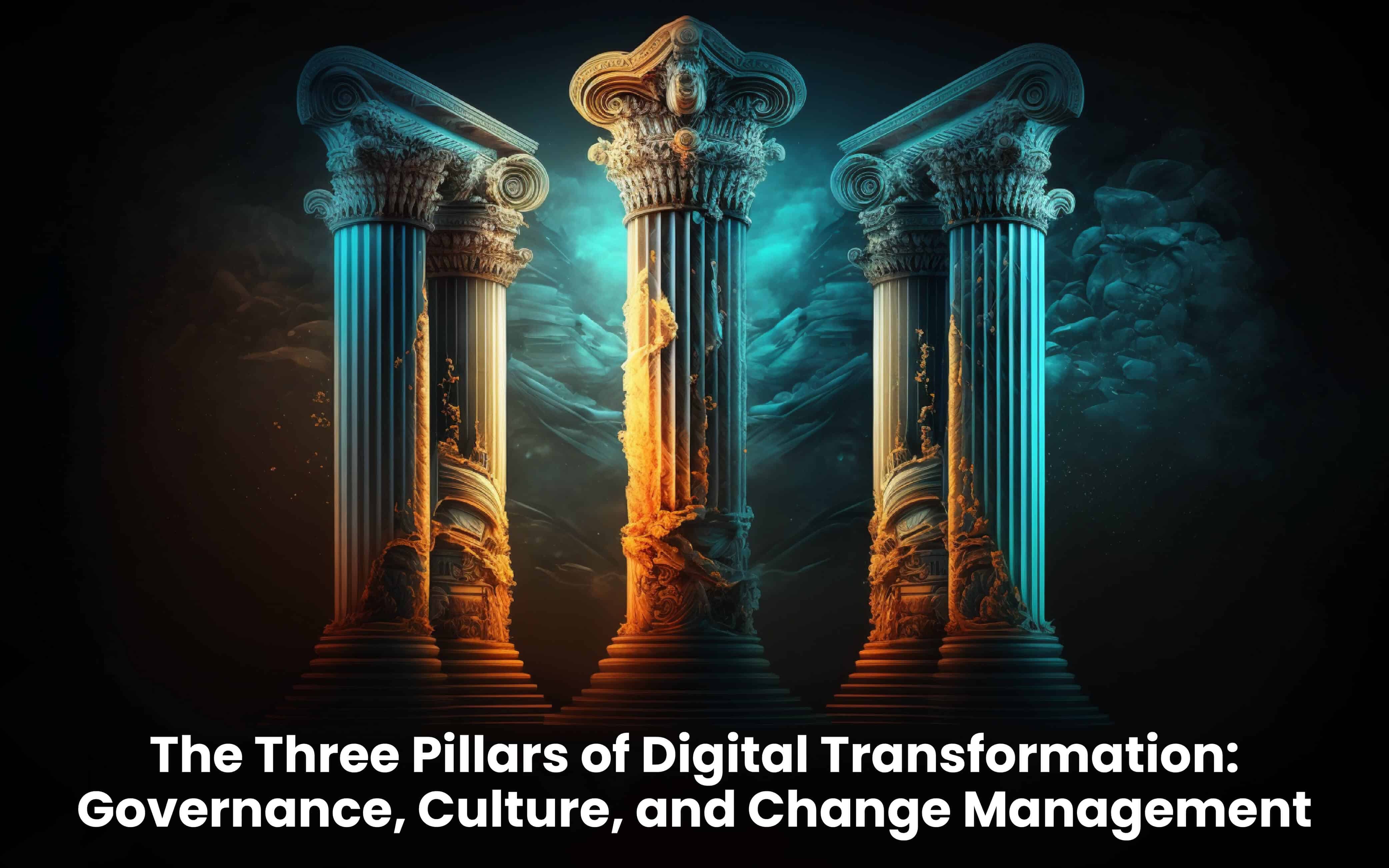Blogs
To know about all things Digitisation and Innovation read our blogs here.
Digital Transformation
How To Build A Culture Of Innovation And Change Through Digitalization?
SID Global Solutions
9 May 2023

Introduction
The business landscape is being swiftly transformed by digitalization, which is spurring innovation and transformation across industries. Organizations must embrace digital change and foster an innovative culture to remain competitive and relevant. This entails utilizing technology to support innovative working methods, encouraging cooperation and knowledge exchange, and enabling staff to take calculated risks and think outside the box.
By doing this, businesses can seize new chances for development and achievement. Understanding how digitalization drives innovation is essential for marketing internships if they want to excel in the sector’s constant change. Here, we’ll take a gander at how digitalization can be utilized to make a culture of development and change, too, and how showcasing temporary positions can help on the way.
Characterizing Society: Grasping the Significance of Authoritative Culture
The qualities, convictions, mentalities, and ways of behaving of an association make up its way of life. It affects how workers, consumers, and the larger community relate. Employee engagement, innovation, and productivity can all be fueled by a strong organizational culture, whereas turnover, low morale, and subpar performance can result from a weak or toxic culture.
- Defining the Elements of Organizational Culture: To build a positive culture, it’s essential to understand the key elements that shape it. These may include a shared purpose or mission, a sense of belonging and inclusion, open communication, trust and respect, and a commitment to learning and development.
- Understanding the Importance of Organizational Culture: A strong culture can significantly impact an organization’s success, from attracting and retaining top talent to driving innovation and growth. It can also help to build a positive reputation and brand image and enhance customer loyalty and satisfaction.
Also Read: Successful Digital Transformation Strategies Focus on People, Not Technology
Building a Culture of Innovation: Key Elements and Strategies
In today’s rapidly evolving business landscape, innovation has become a crucial factor in determining the success of any organization. Companies that foster a culture of innovation tend to outperform their competitors and are more likely to develop groundbreaking products and services that create new markets and disrupt existing ones. So, how can businesses develop a culture of innovation?
The followings are some crucial components and helpful tactics:
- Providing staff with the freedom to experiment with new ideas and the tools to do so can foster innovation. A culture of innovation can be promoted by recognizing staff members’ creativity and problem-solving abilities and encouraging them to try out novel strategies.
- Open communication and collaboration are essential for fostering creativity. Businesses may foster an environment where many viewpoints and skill sets combine to tackle complex challenges by dismantling silos and promoting cross-functional teams.
- Employing an agile and flexible work style can help businesses remain nimble and adapt to changing conditions. It may entail implementing new procedures and technological advancements and promoting experimentation and ongoing development.
- Technology and innovation go hand in hand. By investing in cutting-edge technologies and digital tools, businesses can automate procedures, increase productivity, and open fresh avenues for expansion and innovation.
- Recognizing and rewarding innovation can encourage staff to take chances and think creatively. Recognizing and rewarding outstanding ideas can contribute to developing a culture that values creativity and innovation, whether through formal recognition programs or unofficial rewards.
Case studies and examples
- ‘Google’ is one business that has successfully fostered an innovative culture. ‘Gmail’ and ‘Google Maps’ were developed because Google encouraged its employees to spend 20% of their time on initiatives outside their job description.
- Another illustration is the “fail fast” innovation strategy used by “Amazon,” which encourages staff members to try new things even if they don’t work. This strategy results from creating goods like Amazon Prime and Amazon Echo.
The Contribution of Leadership to Innovation and Change
The ability of the leadership to drive and support innovation and change projects within an organization is a significant factor in their success. Confident leaders are critical in fostering innovation and change inside their organizations.
- By being open to new ideas and willing to take chances, leaders must set an example for innovation and change. Leaders can encourage their staff to innovate by exhibiting a commitment to it themselves.
- By supporting a growth attitude within their teams, leaders can promote innovation and transformation. This entails developing a setting that encourages study, experimentation, and the investigation of novel concepts.
- Employee ownership of innovation and change projects should be encouraged by leaders. Leaders may assist their teams in overcoming any obstacles to innovation by giving them the tools, encouragement, and support they need.
- Clear communication of the innovation and transformation vision is essential for success. Leaders must convey their idea to all organization stakeholders clearly and consistently.
Also Read: 7 Crucial Elements of Digital Transformation
A case study
- An excellent illustration of how effective leadership can spur innovation and development is “Apple Inc.” Apple constantly unveiled cutting-edge devices under Steve Jobs’ direction, including the iPod, iPhone, and iPad. Even after his death, Jobs’ innovative leadership at Apple helped to foster a culture of innovation.
- Another illustration of how effective leadership can spur innovation and change is “Amazon.” Under Jeff Bezos’ direction, Amazon has consistently broadened its selection, tried out novel goods and services, and upended established markets.
Leveraging Technology to Promote Innovation: Embracing Digitalization
Digitalization has become critical in fostering innovation and company growth in today’s ever-changing world. Associations that embrace digitalization can utilize innovation to cultivate development and keep up with seriousness.
- Organizations might utilize state-of-the-art advancements like artificial consciousness, blockchain, and the Web of Things (IoT) to work on their items and administrations while smoothing out their cycles. By embracing these advancements, associations might improve their activities, cut expenses, and give state-of-the-art answers to their clients.
- Businesses can now collect and analyze vast amounts of data, which gives them essential insights into consumer behavior and industry trends. Organizations can use this data to guide choices and spur innovation based on data-driven insights.
- Digitalization has revolutionized how companies communicate with their clients, allowing them to deliver individualized and seamless experiences across various platforms. By utilizing technology, organizations can develop cutting-edge solutions that enhance the customer experience and encourage customer loyalty.
- Traditional sectors have been upended by businesses like Amazon, Uber, and Airbnb that have used technology to innovate and offer fresh approaches. These businesses have revolutionized how we purchase, travel, and even find lodging by adopting digitalization.
Promoting Cooperation and Knowledge Exchange: Dismantling Silos
Creativity and success are driven mainly by collaboration and knowledge exchange in any organization. But many companies find it challenging to eliminate silos and promote a culture of cooperation and knowledge sharing.
- Establishing cross-functional teams can promote collaboration and aid in tearing down organizational silos. Teams can work together to solve complicated challenges and spur creativity by assembling people with various talents and specialties.
- Knowledge sharing and collaboration depend on effective communication. Teams may easily communicate and exchange knowledge by utilizing communication technologies and tactics like video conferencing, instant messaging, and online project management platforms.
- A learning culture supports sharing of information and skills as well as ongoing development and improvement. Businesses may promote a learning culture by providing training and development opportunities, setting up mentorship programs, and encouraging staff to impart their knowledge to others.
Example:
An excellent example of a business that promotes teamwork and knowledge sharing is “Google.” The organization enables cross-functional teams and provides locations where staff members can congregate and exchange ideas. In addition, they provide many opportunities for training and development so that their staff members can keep growing and learning.
Giving employees more control through promoting risk-taking and creativity
Employee empowerment may result in a more motivated and creative staff. However, many businesses need help to promote a culture of innovation and risk-taking. Motivating staff to take chances might be difficult because doing so requires venturing outside one’s comfort zone and possibly failing. Here are some essential tactics for empowering staff members:
- Giving staff members autonomy and the flexibility to take charge of their actions can boost creativity and instill pride in their job.
- Encouraging experimentation and letting staff members try different strategies can result in fresh insights and creative solutions.
- Fostering an environment where failure is seen as a learning opportunity rather than a negative outcome might motivate staff members to take chances and attempt new things.
- Rewarding and praising staff for their creativity and innovation might encourage them to take chances and think beyond the box.
Examples:
- ‘Zappos’ is an example of a company that empowers employees by encouraging staff to take chances and use creativity when providing customer care.
- ‘3M’ is another example, which permits staff members to spend up to 15% of their time working on creative initiatives aside from their regular job responsibilities.
Organizations might encourage a climate where advancement can flourish and deliver new thoughts and arrangements that prod development and accomplishment by enabling individuals and advancing imagination and hazard-taking.
Also Read: What are the strategies to attract and retain talent during a recession
Estimating Achievement: Making Measurements for Change and Development
Organizations should characterize measurements for development and change to evaluate the viability of their advancement exercises. Laying exact measurements by the association’s objectives and goals is essential to gauge advancement achievement. Coming up next are a few fundamental techniques for assessing development and change:
- Organizations should lay out exact advancement estimates that help their points and targets. These actions might incorporate how much cash is produced using new merchandise, their portion of total pay, client satisfaction, and worker spirit.
- Associations can quantify progress and pinpoint regions for advancement through routine development evaluations. These evaluations may include measures for innovation, employee feedback, and customer feedback.
- Establishing KPIs for innovation might assist organizations in tracking their advancement toward their objectives. The number of patent applications, the percentage of sales from new goods, and the number of successful product launches are all examples of KPIs.
- Organizations may maintain their focus on innovation and change by fostering a culture of continuous improvement. It may entail completing innovation assessments, analyzing metrics regularly, and encouraging staff to submit suggestions for improvements and new ideas.
Overcoming Challenges: Common Obstacles to Building a Culture of Innovation
Innovation is crucial for the growth and success of any business, but building a culture of innovation can be challenging. There are several common obstacles that companies face when trying to foster innovation.
- Many employees may resist change and prefer to stick to familiar processes and routines.
- Limited resources, such as time and funding, can hinder innovation efforts.
- Fear of failure can prevent employees from taking risks and trying new ideas.
- Silos and communication barriers between different teams and departments can prevent collaboration and hinder innovation.
- Without solid leadership support, innovation efforts may not receive the necessary resources and attention.
Conclusion
Organizations must embrace innovation and change to stay competitive in today’s fast-paced digital environment. Businesses can promote development and success by embracing a culture of innovation and exploiting digital transformation. Companies may realize their full potential and prosper in a rapidly changing market with a clear strategy, strong leadership, and a willingness to adopt novel concepts and technologies.









